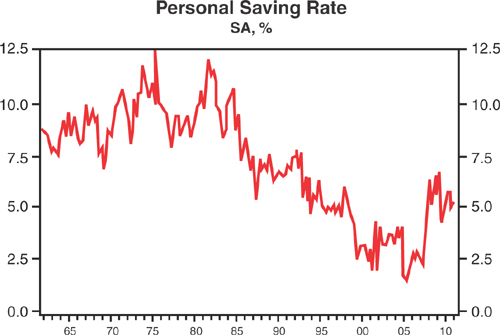Introduction: Reaching the Keynesian Endpoint
After the fall of Lehman Brothers in September 2008, the scope of the financial crisis became so great that the fiscal and monetary authorities of the developed world possessed the only balance sheets large enough to resolve the crisis and thereby restore stability to the world’s financial markets and the global economy. In essence, the ills of the private sector were set to shift to the public sector. The sense at the time was that it would work; after all, the borrowing abilities of the United States and the rest of the developed world were proven, and the ability of central banks to print money was and remains indisputable. Moreover, Keynesian economics had “succeeded” at restoring stability to ailing economies before through the elixir of government borrowing and spending ever since John Maynard Keynes pioneered the concept during the Great Depression. Nevertheless, there was a sense of discomfort in the supposed solution.
After Lehman fell, I posed a question, calling it the question of our age: If the Unites States is backing its financial system, who is backing the United States? The basic premise rested on the idea that efforts to stabilize economies and markets were likely to work if investors tolerated the additional debt the efforts required. If not, there would be financial Armageddon. The direst outcome was of course avoided, but dark days have smitten many nations, including Portugal, Ireland, and Greece, and the gloom is threatening to spread to the world at large, where sovereign debt threatens financial calamity for nations whose actions over many decades have left them teetering on the edge of a cliff, clinging by their nails, pulling ever-downward toward an unforgiving and impervious landing below. The grim fate of the indebted, once viewed as unfathomable, is increasingly seen as possible because the magic elixir of Keynesian economics has morphed into poison.
Nations have reached, in other words, the Keynesian Endpoint, where there are no private sector or public sector balance sheets left to fuel economic activity and rescue the world’s financial system. This is not literally true but true in practice because investors at the present time have no tolerance for fiscal profligacy or any form of government borrowing geared toward reviving weakness in private sector demand, especially if the lapses in demand are the result of the private sector’s effort to reduce its own indebtedness. There is also little appetite for the monetization of deficits by the world’s central banks.
Nations are left with old playbooks and few choices to revive the global economy and stabilize the world’s financial system. This means that time, devaluations, and debt restructurings will be the only way out for many nations. It also means the citizenry will need politicians who think outside of the box and act with greater determination and resolve than ever before. This is a time for leadership to emerge in local towns, cities, and states, and in the capitols of nations throughout the world. Today’s political leaders are behooved to solve their nations’ problems by being realistic about them. Most importantly, they must put ideology aside and subordinate their self-interests to those of the people they serve, something they are not accustomed to. There can be no more fiscal illusions, consumption binges, or Ponzi schemes. The Keynesian Endpoint has revealed what lies behind the curtain of those who say that the answer to every economic ill is debt. The transformation of a century is upon us, and the folly of many decades is over.
Not Enough Jam to Fit the Size of the Pill
In his classic book The General Theory of Employment, John Maynard Keynes theorizes that the marginal propensity to consume, which measures the proportion of increased spending that is expected to result from each unit of change in income, is far closer to 100 percent than it is to zero. Keynes believed that with people more likely to spend new income rather than save it, the multiplier effect resulting from government spending will be large enough to justify spending initiatives geared toward reviving lapses in aggregate demand. In other words, government spending is justified if it boosts national income by an amount greater than the amount of the spending and if it increases the total level of employment.
In the excerpt from The General Theory that follows, Keynes describes this dynamic, providing a qualification that can be applied to the current situation, chiefly the possibility that the employment gains will be smaller if the “community” holds back its spending, as is presently occurring in the United States, where the savings rate is on the rise. Keynes recognizes that there are times such as today when the psychology of spending will foil efforts to revive consumption no matter how far the fiscal authority puts its pedal to the metal:
It follows, therefore, that, if the consumption psychology of the community is such that they will choose to consume, e.g. nine-tenths of an increment of income, then the multiplier k is 10; and the total employment caused by (e.g.) increased public works will be ten times the primary employment provided by the public works themselves, assuming no reduction of investment in other directions. Only in the event of the community maintaining their consumption unchanged in spite of the increase in employment and hence in real income, will the increase of employment be restricted to the primary employment provided by the public works.1
The impact that the current deleveraging process might have on the marginal propensity to consume begs the question: Can the world’s fiscal authorities, having reached a point where the private sector’s want, need, and in many cases only choice is to reduce debt and hence the desire to consume, rationally expect that by ever-increasing the amount of public borrowing they can increase the total amount of employment in any manner that even remotely resembles the way they were able to in the past? Is it possible to boost aggregate demand when both the ability and the impulse to spend have become relics of an era now past? Suppose as policymakers might, this scenario seems implausible. Although the desire to consume to impress, to fulfill primal needs, and to display power is everlasting, the psychology of spending has been altered and won’t return with the same verve for at least a generation. The psychological desire is gone, as are the social cues and the money—there is no balance sheet to finance consumption willy-nilly any more.
Today’s policymakers must recognize that when Keynes speaks to the idea of a multiplier, he does so with a very important qualification that unequivocally applies today and in any other period of deleveraging. Specifically, although Keynes surmises that the marginal propensity to consume is close to 100 percent, there are exceptions:
If saving is the pill and consumption is the jam, the extra jam has to be proportioned to the size of the additional pill. Unless the psychological propensities of the public are different from what we are supposing, we have here established the law that increased employment for investment must necessarily stimulate the industries producing for consumption and thus lead to a total increase of employment which is a multiple of the primary employment required by the investment itself.2
Today’s Keynesians are failing to realize this notion, that the psychological propensities of the public are indeed dramatically changed. Keynesians continue to believe that government spending will ignite aggregate spending and employment. This is a very difficult view to reconcile against the post-crisis experience. Is it not apparent in Figure I-1 that consumers either can’t or won’t borrow to consume like they used to?
Figure I-1. In the past, consumers borrowed through thick or thin. Not this time.
Source: Federal Reserve Board/Haver Analytics

The bottom line is that nations must recognize that the economic agents upon which they rely to boost consumption and eventually employment are impaired and are now on a path of deleveraging that will limit the effectiveness of new fiscal stimulus. The decrease in the marginal propensity to consume, which is evidenced in the extraordinary decline in consumer credit, as well as the rising U.S. savings rate shown in Figure I-2, weaken the multiplier effect. It is extraordinarily unreasonable to assume that fiscal stimulus in an age of deleveraging will boost private spending in the same fashion as it has in the past, especially with debt now associated with pain rather than pleasure—a major psychological barrier to reviving the growth rates in aggregate spending to pre-crisis levels. Consumers simply do not have the stomach to engage in an activity that resulted in their getting kicked out of their homes and losing their jobs. This is in addition to the idea that there are no more balance sheets to fund the stimulus.
Figure I-2. Following a 30-year spending binge, it’s back to basics and saving for a rainy day.
Source: Bureau of Economic Analysis/Haver Analytics

The harsh realities of the Keynesian Endpoint put academicians, politicians, and opinion writers in a cloister, where others who recognize the existence of the Endpoint will engulf their collective voice and influence. Intransigent Keynesians will be significantly outnumbered by the masses of people having the good sense to know that to avoid the societal harm that can come from excessive indebtedness, they must choose fiscal austerity and other remedies over further indebtedness. Sometimes the masses will stand in the way of structural changes needed to repair a damaged society. Greece exemplifies this more complicated and challenging condition. When in cases such as this the masses stand in the way of change, politicians must in the face of enormous pressure be bold and take the lead and act against the will of the people like a sick child who resists taking his medicine.
The Keynesian Endpoint has been reached because investors have decided sovereign debts are too large relative to the balance sheets available to support them, posing risk of eventual sovereign debt defaults. In today’s era of deleveraging, investors are intolerant of fiscal profligacy and will choose to invest in nations with improving balance sheets over those that are worsening or are mired in a protracted steady state where debt hamstrings economic activity. Having tapped the last balance sheet, nations at the Endpoint will place burdens on many, including their citizens, trading partners, savers, and bond holders. They will do so by inflicting their pain over time, taking as long as is necessary to liquidate their debts. In so doing they will be spared the worst of the sovereign debt dilemma and avoid technical default, but they will experience sub-par economic growth over the longer term, resulting in low inflation, low policy rates, steep yield curves, low investment returns, and a weakening domestic currency.
The lack of cohesion and policy coordination among troubled nations will result in a sharp divergence between winners and losers. It is notable, for example, that whenever stress levels have reached a fever pitch—as judged by periods of weakening equity markets, widening credit spreads, and more volatile foreign exchange rates—capital flows into traditional safe havens has increased, including into the United States, Germany, and Switzerland in particular.
Some nations will find the Holy Grail and look beyond Keynesianism and find new means of stimulating economic growth. Others will be intransigent, clinging to their Keynesian ways and in the process fail to take measures that restore fiscal stability. These nations will be forced to devalue their currencies, restructure their debts, or eventually adopt more severe austerity measures that lead to a muddle-through economic growth path that perpetuates stagnation for the sake of liquidating debt, all of which put at risk a nation’s productivity, the essential element that defines a nation’s standard of living and the quality of life of its citizens.
